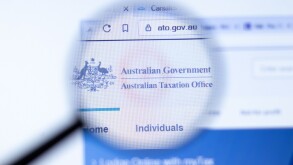|
|
Mexico’s economic sweet spots |
A special economic zone (SEZ) is defined as a specific geographical area in which special custom and/or tax regimes are applicable to attract investments. SEZs have been used in the past by several countries that can tell stories of success. The purpose of any government when creating a SEZ is to generate incentives for both domestic and international investors to invest in such areas with the final goal of creating infrastructure and growth.
Over the past century, China was one of the first countries to create SEZs in several regions that are now recognised as the cities that have contributed to China's growth and tangible integration in the international world of commerce. The Shenzhen special economic zone was established in 1979-80 and it successfully attracted both foreign and domestic investors over the years, until becoming one of the most commercially-active areas within China. This was achieved due to the market-oriented reforms that were enforced for the region, which were then replicated for other subsequent SEZs that have been created in China.
According to information published by the World Bank, SEZs have significantly contributed to China's development in the past 30 years, as they have acted as a catalyst for efficient allocation of domestic and international resources, and they have deepened economic opening by attracting international capital, technology and technical and managerial expertise stimulating industrial development and China's integration into the global economy. It is estimated that SEZs have generated 45% of total national foreign direct investments in China, and have created more than 30 million jobs over the years, which proves that SEZs are an alternative for growth and integration to the global economy if they are implemented properly.
Following China's and other countries' experiences, Mexico approved in 2016 a new legislation incorporating the legal framework for SEZs to be created in Mexico. The legislation passed considered that special legislation and incentives should be created so that Mexico should have SEZs up and running by the end 2018 or early 2019 (Ley Federal de Zonas Económicas Especiales).
The SEZs law provides for the general guidelines for the establishment and operation of these special regions at underdeveloped areas of Mexico that need support and incentives to grow. The law establishes that the analysis would be made to select the regions that should be declared SEZs, and that such areas would have to be considered as an investing priority for the development within Mexico. Following this rationale, the establishment of Mexican SEZs would only be allowed in areas located within the 10 most underdeveloped states of Mexico, and provided such zones have a strategic location for the development of certain economic activities. As provided by the law, a SEZ may only be established within municipalities with less than 500,000 habitants.
Once the analysis has been made and a region has been selected, a special decree would be issued to establish the limits of the SEZ and the incentives that would be applicable in each region.
The purpose of this article is to provide a general description of the main benefits that have been included in the special decrees and regulations issued as of the date this article was prepared, for the seven SEZs that have been declared as such.
However, there are some relevant differences regarding the activities that may be authorised for each SEZ and in connection with the benefits provided for residents of each one of the regions. The tax incentives that have been included in this article have been selected based on the similarities among the SEZs known to date, so in order to identify any special benefit or activity for a SEZ a detailed analysis of the specific decree would be necessary.
The main tax benefits that have been included until now in the decrees that have been published to declare a SEZ in Mexico provide for a 100% reduction of the income tax deriving from activities carried out within the SEZ during a period of up to 10 years, and a 50% reduction for the subsequent five years (this is for SEZs where the incentive period is established to last 15 years in total). This benefit would be applicable both for annual income tax and monthly income tax advance payments.
In the case of entities operating within a SEZ, it is important to note that since the income tax reduction previously mentioned would only apply to the corporate tax of the entity itself, it would only eliminate the 30% income tax liability due on net profits generated by the entity. However, bear in mind that since January 2014, there is a 10% withholding tax on dividends paid to shareholders or partners that are non-residents of Mexico, or that are Mexican individuals.
There is not a specific exemption of this dividend tax, and therefore it would continue to apply to profits generated within SEZs that are distributed to either non-resident shareholders or partners or Mexican individuals that are shareholders or partners of entities operating within the SEZs. This dividend tax may be reduced under any tax treaty that may be applicable to the specific non-resident shareholder or partner.
The special decrees regulating the creation and administration of SEZs in Mexico that have been issued allow taxpayers to determine their individual profits or losses for each SEZ by considering items of income and deductions directly associated with the activities for which they obtained authorisation to operate within a specific SEZ. Also, there is a special 'importation/exportation' regime for assets that are introduced to or withdrawn from the territory of a SEZ, as they are "deemed acquired" when they enter the zone and "deemed sold" when they leave the zone, so that the goods introduced to a SEZ may benefit from customs and VAT incentives.
Regarding training for workers, it is provided that expenses associated with training within the SEZ in connection with the activities that were authorised would allow an additional 25% deduction for income tax purposes in the year in which the expenditure is made, although it is established that such a deduction may not trigger a loss for the taxpayer in such year. For these expenses to qualify for this additional deduction, evidence that technical or scientific knowledge is being transferred to such personnel must exist.
In order for these tax benefits to apply, the taxpayer operating under a permit in a SEZ must be in compliance with all its tax obligations and, specifically, with all obligations deriving from social security contributions and withholding taxes deriving from payments to employees working in the SEZ.
Also, in order to control the creation of jobs, taxpayers operating in a SEZ are also required to maintain at least the same number of workers registered before the Mexican social security institute (IMSS) in each fiscal year in which they intend to apply the aforementioned income tax reductions and benefits.
Taxpayers operating in a SEZ may also benefit from an additional income tax credit determined as 50% of certain employer social security contributions effectively paid to the IMSS associated with workers who render services within the SEZ during the first 10 years, and 25% in the subsequent five years (again, making reference to SEZs where the incentive period is 15 years). If the tax credit allowed exceeds the income tax payable in a given year, the excess may be even claimed as a refund from the tax authorities.
Regarding other taxes, such as VAT, a 0% VAT rate would be applicable on the sale or leasing of goods carried out by any person (outside the SEZ) when the transaction is carried out in benefit of either an investor operating under a permit within a SEZ or a SEZ integral manager located within the zone, to the extent there is evidence of the introduction of the leased or sold goods to the zone (deemed imported to the zone).
The same 0% rate would be applicable to services rendered by persons located outside the zone when the services are directly associated with the construction, management and maintenance of the SEZ, or with certain productive activities carried out within the zone.
If VAT is charged to a resident of a SEZ, the VAT charged may be claimed as a refund from the tax authorities, who should this within 20 business days after the claim is filed. Although this incentive sounds very attractive, it's important to bear in mind that VAT claims have been very problematic in recent years as the tax authorities have created certain internal guidelines that result in very complex negotiations with the tax authorities to get a refund. If these same guidelines are applied to SEZ residents, this benefit may not be as tangible for the taxpayers operating in a SEZ as the other benefits described in this article that are claimed in a tax return.
With respect to taxpayers located within the SEZ, they would not be considered as taxpayers for VAT purposes for the activities are carried out within the SEZ. This benefit would apply even with respect to the activities that are carried out and that involve the extraction of goods from a SEZ to be introduced to another SEZ, to the extent the guidelines issued by the Mexican authorities for such purposes are complied with.
Other tax benefits are also provided for purposes of reducing or eliminating certain rights that would have otherwise been payable by the SEZ integral managers when using government assets and for transactions carried out which would otherwise been subject to the special excise tax on production and services (Impuesto Especial sobre Producción y Servicios, or IEPS).
It should be noted that the tax benefits are applicable to the SEZ managers and to the investors that obtain the permit or authorisation to operate within each SEZ for a limited period of time (generally 15 years) and would be valid only for the operations carried out within each SEZ or with residents of a SEZ as explained before. This means that in the event an investor has operations in more than one SEZ, they must keep records to identify the profits and losses deriving from operations associated with each SEZ so they are able to report them individually and determine the benefits properly for each SEZ. Regulations may be issued in the future in order to provide guidelines for taxpayers operating in various SEZs so that they may apply and report the benefits in their tax returns, as there are no formats or guidelines to do so as of the date this article was prepared.
Also, it is established that the SEZ regime in general is subject to the issuance of general rules by the tax authorities to apply the benefits provided in the decrees. Hopefully these rules will also incorporate new rules to adapt the general tax regime applicable to taxpayers doing business in Mexico, as the lack of these regulations may affect the benefits provided by the SEZ decrees. Some examples of situations that will require specific regulations are:
The procedure to determine the tax cost basis of the shares issued by companies operating under a SEZ authorisation;
How to determine the net-of-tax retained earnings account (CUFIN, as per its acronym in Spanish) available for tax-free distribution of dividends to shareholders and partners; and
Special forms to report profits and losses as well as credits available under the special regime, etc.
Also, since the rational of the legislation regulating SEZs is to provide a better business environment for investors to bring operations to this areas, there will also be administrative simplification when creating entities to operate in a SEZ and to obtain all related local permits and authorisation as each state may require. For this purpose, coordination agreements will be signed with the states and municipalities where a SEZ has been declared so that administrative burdens are reduced by the local governments, and tax incentives and reductions are also granted to taxpayers operating in such areas, such as reducing the property tax, transfer tax, payroll tax, etc.
Special customs regime
As mentioned before, a special customs regime is provided for the introduction of non-Mexican goods to the SEZ to the extent they are introduced to be used in productive economic activities within such an area. The regime includes no custom taxes for such goods when imported (with certain exceptions), and an exemption so that they are not subject to compliance with customs regulations and non-tax restrictions or official norms (NOMs) published by the Mexican Ministry of Economy. Also, it is provided that goods that are introduced to these zones will be generally considered as "deemed-exported" for all customs purposes (except certain cases specifically regulated for IEPS purposes).
The customs regime for goods introduced under this incentive would allow such goods to remain within the SEZ for a period of up to 60 months (unless the term is specifically governed by the authorisation granted to operate in the SEZ, such as in the case of machinery, equipment, tools, instruments, moulds and spare parts for the production process, or equipment for pollution control, research or training in industrial safety, telecommunications and computing, among other cases). If the imported goods are not withdrawn from the SEZ before the established period elapses they will be considered as being illegally in the country for all customs purposes with all the related implications.
As in the case of VAT, it is established that goods that are introduced into a SEZ under this special customs regime may be freely transferred between taxpayers located in the same SEZ or in a different SEZ (in this last case customs procedures and formalities shall be met and all rights and contributions that must be paid for customs processing must be covered at a preferential rate that is established as an incentive.
Current authorised SEZs and rules of operation
At the time of writing, seven SEZs had been declared through a specific presidential decree. The areas declared as a SEZ are listed in Table 1.
Table 1 |
|
SEZ |
State |
Lázaro Cárdenas – La Unión |
Michoacán-Guerrero |
Coatzacoalcos |
Veracruz |
Salina Cruz |
Oaxaca |
Puerto Chiapas |
Chiapas |
Progreso |
Yucatán |
Paraíso |
Tabasco |
Champotón |
Campeche |
The government will issue a special permit to a SEZ integral manager who would work as a developer-operator of each specific zone, and will be in charge of building, developing and maintaining the zone through properties owned by either private investors or the government. These special permits will have a term of up to 40 years, with an automatic extension of a similar period.
Potential investors who wish to invest in a SEZ will need to file a request to get an authorisation of their project and the activities that they intend to carry out in such zones. Individuals or entities, resident in Mexico or abroad, may participate in the process to the extent they are engaged in the following activities:
Manufacturing;
Agroindustry;
Processing;
Transformation and storage of raw materials;
Scientific and technological development; or
Any person providing support services to any of the activities previously mentioned, such as logistics, financial, IT, professional and technical services.
Some activities, such as oil refining and natural-gas processing, as well as the storage, transportation, distribution and commercialisation of hydrocarbons and petroleum derivative products are excluded from the possibility to apply for this type of authorisation.
Once the authorities have authorised an investor, the investor must coordinate with the SEZ manager to build the facilities that would allow activities to be carried out within the SEZ.
Raúl Morales Medrano |
|
|---|---|

|
Chevez Ruiz Zamarripa Mexico City Tel: +52 55 52-57-70-78 Raúl Morales Medrano is a partner at Chevez Ruiz Zamarripa. He joined Chevez Ruiz Zamarripa in 1992 and was promoted to partner in 2004. Before joining the firm, Raúl was at Ruiz, Urquiza y Cia, then the representative of Arthur Andersen & Co in Mexico. Raúl has a degree in public accounting from the Autonomous Technological Institute of Mexico (ITAM), and has completed diploma courses in international taxes, joint programme Harvard – ITAM, and labour law and social security (ITAM). He is the ex-president of the Fiscal Commission at the Mexican College of Public Accountants (CCPM). |











